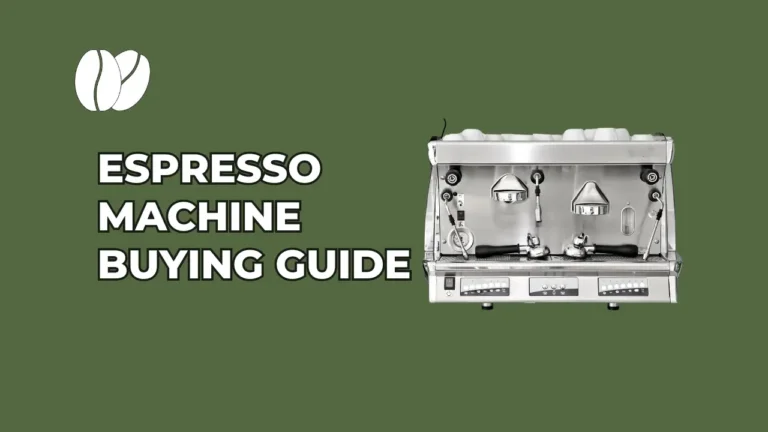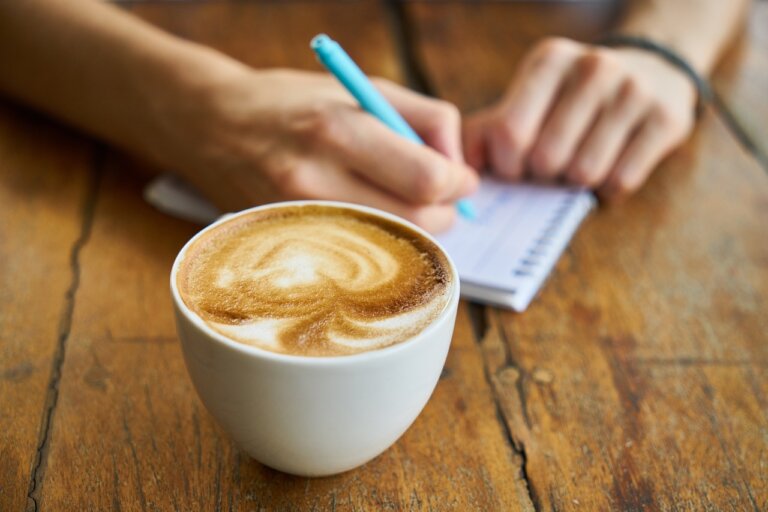Understanding the exact measurements for a shot of espresso is very important as it is the fundamental aspect of espresso to know how many ounces make up a single shot. This measurement balances the strength and flavor of the espresso and creates a perfect coffee experience.
In this guide, we will help you to understand how many ounces are in a shot of espresso and why it is so important.
How Many Ounces Are In A Shot Of Espresso?
A standard shot of espresso is typically 1 ounce (30 milliliters) in volume. But there are some different variations to consider:
1. Single Shot
A single shot of espresso which is also known as a “solo,” is 1 ounce (30 milliliters).
Preparation
It is made using about 7-9 grams of finely ground coffee which is brewed under high pressure (around 9 bars) for about 25-30 seconds.
2. Double Shot
A double shot of espresso “doppio,” is 2 ounces (60 milliliters).
Preparation
This is the most common serving size in many coffee shops which is made by using 14-18 grams of coffee and it’s the base for many espresso-based drinks like lattes, cappuccinos, and Americanos.
3. Ristretto
A ristretto shot is a shorter extraction of espresso which has about 0.75 ounces (22 milliliters).
Preparation
It uses the same amount of coffee as a single shot but with less water which makes it more concentrated and intense in flavor.
4. Lungo
A lungo shot is a “long” shot of espresso, which is around 1.5 ounces (45 milliliters).
Preparation
In Lungo more water is allowed to pass through the coffee grounds which makes the shot larger in volume but slightly more diluted and less intense in flavor compared to a regular espresso shot.
5. Variations by Country
A standard shot of espresso in Italy is 1 ounce but in the United States and other countries, variations like the double shot (2 ounces) are often standard.
Some coffee shops might also serve a shot of espresso that slightly deviates from the standard 1 ounce but it depends on their specific equipment, recipes, or preferences.
6. Espresso and Crema
The actual liquid part of the espresso shot when extracted may occupy slightly less than the full ounce in the cup because of the crema which is a foam that forms on top. The crema is an important component of espresso which contributes to its flavor and texture.
7. Impact of Espresso Volume on Taste
The volume of the shot can impact the taste and intensity of the espresso. A shorter shot (ristretto) will be more concentrated and have a richer flavor while a longer shot (lungo) will be milder and less intense.
8. Use in Espresso-Based Drinks
The volume of the espresso shot plays an important role in espresso-based drinks. A latte uses a double shot (2 ounces) of espresso while a macchiato uses a single shot (1 ounce) topped with a small amount of foamed milk.
Why Is The Ounce Measurement Important For Espresso?
The ounce measurement is important for the following reasons.
1. Consistency in Brewing
The ounce measurement standardizes the volume of espresso shots by making sure that each shot is consistent in size and strength. This consistency is very important in professional settings like coffee shops where customers expect the same quality and taste every time.
Espresso recipes the amount of coffee used brewing time, and water volume rely on precise measurements. Knowing that a shot is 1 ounce allows baristas to fine-tune these variables to achieve the flavor a person wants.
2. Flavor Balance
The ounce measurement directly impacts the concentration of the espresso. A 1-ounce shot delivers a specific balance of coffee oils, flavors, and aromas. If the shot is too large or too small then it can result in a weak or overly concentrated espresso which will affect the taste and mouthfeel.
The amount of water passing through the coffee grounds during extraction is important because the 1-ounce standard helps to make sure that the extraction time (usually 25-30 seconds) is optimal avoiding under-extraction (which can taste sour) or over-extraction (which can taste bitter).
3. Base for Espresso-Based Drinks
Many espresso-based drinks like lattes, cappuccinos, and macchiatos rely on a specific volume of espresso as their base. The 1-ounce measurement helps maintain the correct balance between the espresso and other ingredients such as milk or water ensuring the intended flavor and texture of the drink.
Baristas can adjust the number of ounces in an espresso shot to customize drinks according to customer preferences such as offering a stronger or milder taste by altering the shot size.
4. Quality Control
The ounce measurement is a key indicator of a barista’s skill. A perfectly measured and extracted 1-ounce shot needs proper technique and attention to detail which is essential for producing high-quality espresso.
Espresso machines are often calibrated to produce a specific volume of espresso. Knowing that 1 ounce is the standard helps in calibrating machines maintaining their performance and ensuring the best possible extraction.
How Do Different Coffee Beans Affect Espresso Ounces?
Different coffee beans can significantly impact the taste, extraction process and overall experience of an espresso shot but they do not directly change the volume of the shot which is typically standardized at 1 ounce for a single shot. However, the type of coffee beans used can have an impact on how the espresso within that 1-ounce shot tastes and feels. Here’s how different coffee beans can affect espresso:
1. Bean Type: Arabica vs. Robusta
Arabica Beans
Arabica beans are known for their smooth and complex flavors with notes of fruit, sugar, and acidity. They tend to produce a more nuanced espresso with a delicate balance of sweetness and acidity.
Arabica beans generally produce less crema (the creamy foam on top of an espresso shot) compared to Robusta beans but the crema is often finer and more consistent.
Robusta Beans
Robusta beans are stronger with a more bitter and earthy flavor profile. They contribute to a more intense and bold espresso shot which can feel heavier and more robust.
Robusta beans are known for producing a thicker and more abundant crema which can improve the texture and appearance of the espresso. This is often why Robusta is blended with Arabica in espresso blends.
2. Roast Level
Light Roast
Lightly roasted beans tend to be denser and more acidic which requires precise extraction to avoid sourness. The espresso shot may appear lighter in color and have a more pronounced acidity.
Light roasts produce a brighter and more acidic espresso with fruity or floral notes. The flavor profile might be more complex but also less intense in terms of traditional espresso bitterness.
Medium Roast
Medium roasts are more balanced and have a mix of acidity and sweetness. They generally extract well and provide a smooth and well-rounded espresso.
The espresso from medium roast beans often has a balanced flavor profile with a good mix of sweetness, acidity, and bitterness making it a popular choice for espresso.
Dark Roast
Dark roasts are less dense and more porous allowing for easier extraction. But they can over-extract quickly leading to bitterness if not carefully managed.
Espresso from dark roast beans tends to be richer with deeper notes of chocolate, caramel, and a pronounced bitterness. The crema may be darker and thicker.
3. Origin of Beans
Single-Origin Beans
Single-origin beans sourced from one specific region or farm often have distinctive flavors unique to their origin. For instance, Ethiopian beans might produce a fruity and floral espresso while Sumatran beans might result in a more earthy and spicy shot.
Blended Beans
Espresso blends are designed to create a balanced, consistent flavor profile and often combine beans from different regions to achieve a harmonious taste. The blend can help stabilize the espresso’s flavor and crema providing a reliable shot each time.
4. Grind Size and Its Relation to Bean Type
The grind size must be adjusted depending on the type and roast of the beans to ensure the correct extraction time. If the grind is too coarse then the water will flow too quickly which will result in under-extraction and a weaker espresso. If it’s too fine then the water may flow too slowly which will lead to over-extraction and bitterness.
The correct grind size helps to maintain the standard 1-ounce volume while the proper flavor extraction from the beans.
Conclusion
Knowing the exact measurement of a single shot of espresso is around 1 ounce. This small shot is compelling. The role of measurement can allow you to appreciate the shot of espresso better. So, the next time you enjoy your favorite espresso drink you’ll have a deeper connection to the craft behind each shot.



